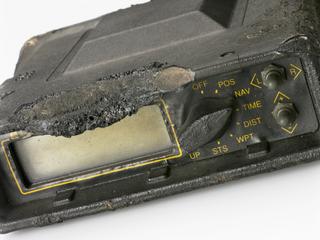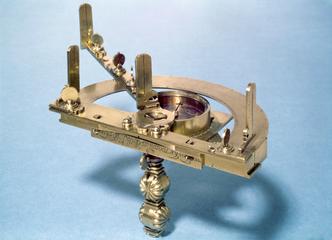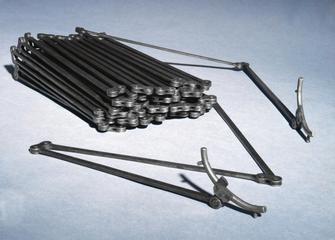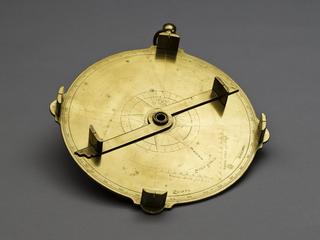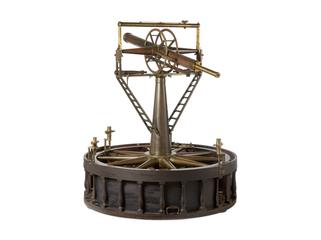


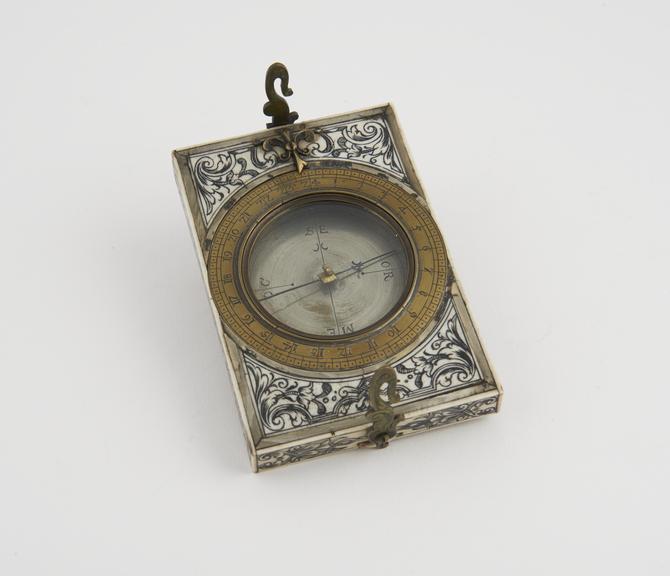
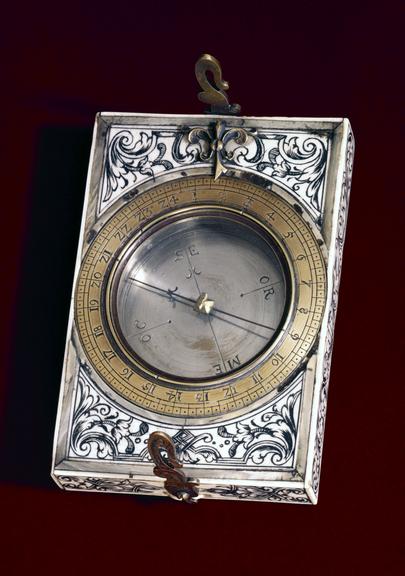
Mining compass in engraved ivory case, Italian, 17th century
Magnetic compasses are portable and easy to use for rapid survey where high accuracy is not required. Particularly useful in mines, the compass could be hung on a hemp rope stretched along the mine gallery and the compass points used to call the direction of mineral veins.
Exploratory and reconnaissance surveys are frequently made with the aid of a magnetic compass since the instrument has the advantages of being highly portable, easy to use and productive of quick results. In these surveys, the compass is used to measure the lines of the sight relative to the magnetic meridian. In effect, this instrument replaces the theodolite for the measurement of horizontal angles. The standard of accuracy attainable is not high and the presence of magnetic materials or electric transmission lines render compass traversing useless.
Early references to the application of the magnetic compass to surveying indicate that the instrument was found to be particularly suitable for use in mines. This object is an Italian miner's compass of the seventeenth century. The use of 24 scale divisions is derived from the mariner's compass. Agricola referred to this feature in his 'De Re Metallica', the foremost work on mining and metallurgy of the Renaissance period. In translation, his words read:
"Now miners reckon as many points as the sailors do in reckoning up the number of winds... Any miner who please may therefore call the direction of the veins by the names if the winds."
Details
- Category:
- Surveying
- Object Number:
- 1880-93
- Materials:
- ivory, brass (copper, zinc alloy), glass, silver (metal), steel (metal), wood (unidentified) and pine (wood)
- Measurements:
-
overall: 45 mm x 120 mm x 75 mm, .14kg
- type:
- mining dial, circumferentor and magnetic compass
- credit:
- Fulgence, Mons. (Paris)
